THE GRAND RAPIDS FURNITURE INDUSTRY
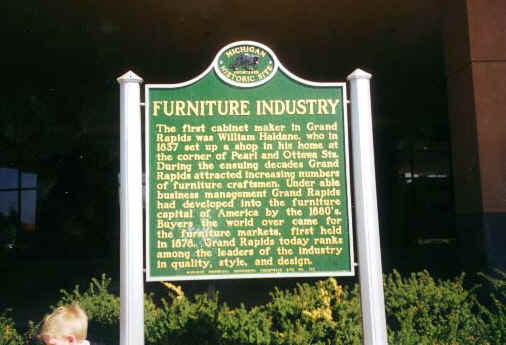
Source:
Photograph by Randy Schaetzl, Professor of Geography - Michigan State University
Ample waterpower generated by the 18-foot fall of the Grand River at Grand
Rapids, and the availability of valuable lumber from nearby pine and hardwood
forests, resulted in the establishment of a number of sawmills and woodworking
(especially furniture-making) industries in Grand Rapids. Following the
display of Grand Rapids furniture at the Philadelphia Centennial in 1876, the
city gained a reputation as the furniture capital of America. Buyers the world
over went to its furniture markets, first held in 1878. The diversification of
its industry began with the advent of World War I, and metal-based manufacturing
industries thereafter exceeded furniture in value and output. Nevertheless,
Grand Rapids furniture produced by its skilled craftsmen has maintained its
eminence in quality, style, and design.
Grand Rapids has become Michigan's second largest city and is the principal trading
centre of western Michigan, including a large area devoted to fruit farming and truck
gardening.
Source: Unknown
In 1826, Grand Rapids was a frontier trading post that gradually grew into a village where
merchants could trade goods for farm products, furs, and salts. By the late 1840s Grand
Rapids was ready to support the furniture industry. Michigan was a place ready for the
lumber industry and Grand Rapids was a city in the right location. Forests were
disappearing from the East where sawmills had been supplying lumber to more homes and
factories. Forests in Michigan became the target for
the next supply of lumber. Immigrants had been moving West in the great migration and when
they decided to stay they became an important part of the labor force.
Combined with all this was the Grand River. It was a gateway to the
West. Investors saw the potential the river had for supplying power for machinery and
transportation to the frontier markets. The settlers who spread across the continent
became consumers of the furniture and were the perfect market.
The men and women who migrated to Grand Rapids were willing to take
risks. They became the inventors, investors, owners, salesmen, and the labor force of the
new furniture industry. Other settlers developed the roads, bridges, canals, railroads,
while others cleared the land for factories and homes. They each helped create a city
where the furniture industry could prosper.
The first factories were located near the Grand River where there was
water transportation and power. When steam engines replaced water power in the 1860s and
1870s, factories were able to move away from the riverfront and move close to railroad
tracks for faster transportation by train. A system of cities defined the landscape of
early Grand Rapids. Mill buildings could be seen from almost every direction one looked.
Wooden structures were replaced by red and yellow bricks with large smokestacks.
The city of Grand Rapids functioned around the factories located
downtown along the river or railroad tracks. The workers lived within walking distance of
the factories or near streetcar lines. The owners did not live near the factories like
many of the workers, they chose to live in larger homes high on the bluffs above downtown
in what is now called, "Heritage Hill." Many neighborhoods and buildings in
Grand Rapids still look as they do because of the furniture industry.
American Seating Company, once known as
the Grand Rapids School Furniture Company (in 1886), is located in the same neighborhood
today. The company still employs many people and is right next to the train tracks, not
too far away from the Grand River.
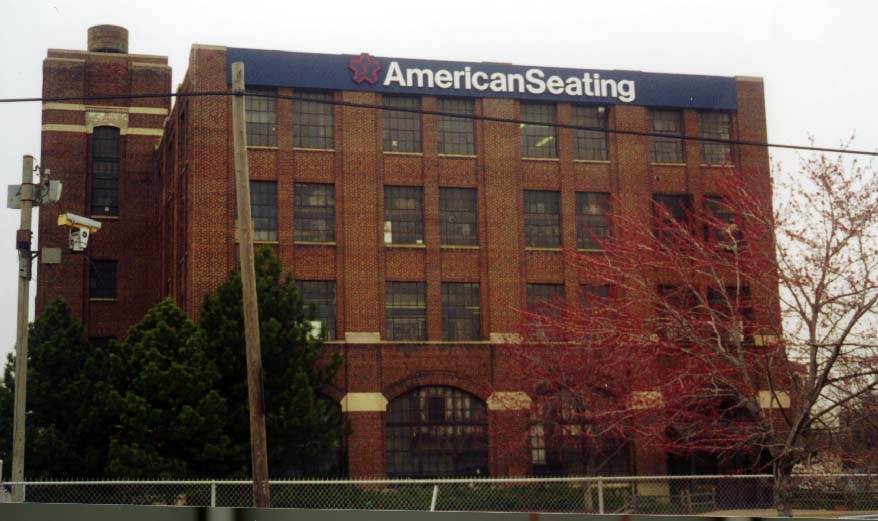
Source:
Photograph by Randy Schaetzl, Professor of Geography - Michigan State University
The John Widdicomb Company was established in 1865 and is still located in the same
neighborhood as American Seating in NW Grand Rapids. The railroad tracks are right in
front of the building where they still build furniture and the Grand River is only a short
walk away. Many of the settlers who worked at John Widdicomb Company and American
Seating were Polish immigrants. The church near the two factories, St. Adalbert’s
Roman Catholic Church was built for these settlers. The church is still there today and
seen from John Widdicomb Company loading dock (see below).

Source:
Photograph by Randy Schaetzl, Professor of Geography - Michigan State University
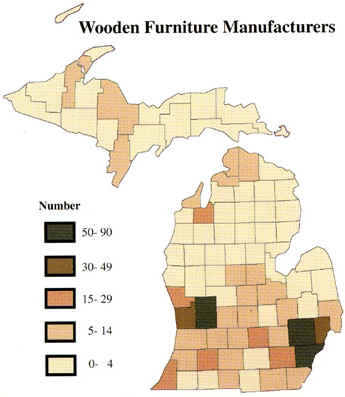
Source: Unknown
Grand Rapids still makes a lot of furniture today, but it is no longer the furniture
capital of the world, like it once was.
Grand Rapids was once known for the residential furniture they once produced. Some
companies like John Widdicomb still occupy the same factory building and use old machinery
and equipment to make traditional products like sofas, tables, and chairs. Some of
the wood carvings that adorn the US Supreme Court came form the John Widdicomb factory.
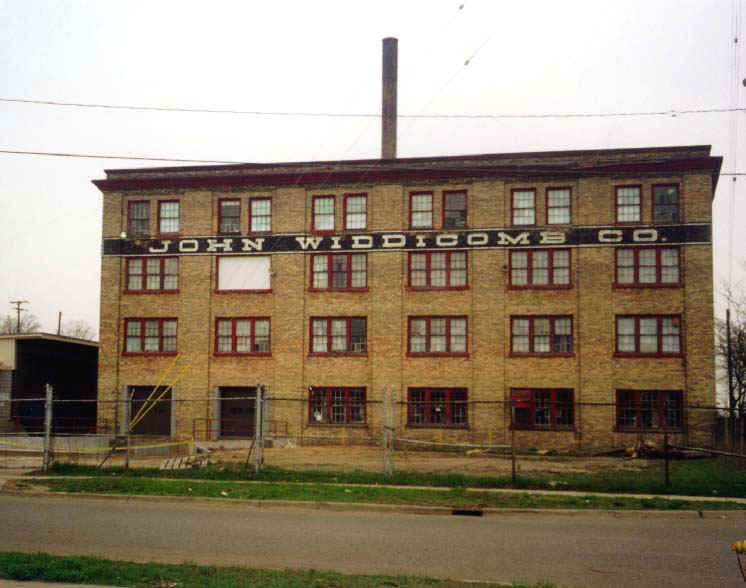
Source: Photograph by Randy Schaetzl, Professor of Geography - Michigan State University
American Seating is still in the same neighborhood, but went from producing school desks,
church pews, and opera or theater seats to producing stadium and theater products and
transportation products like bus seats which the company has become well known for. Some
chairs in elementary schools today still have the American Seating mark, but now you are
more likely to see their products in stadiums and on buses around the country.
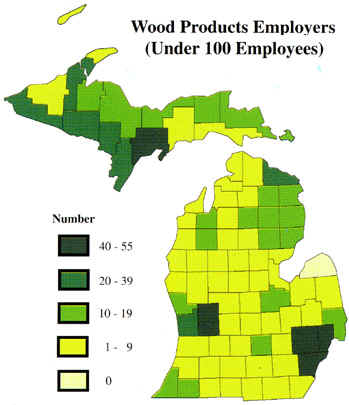
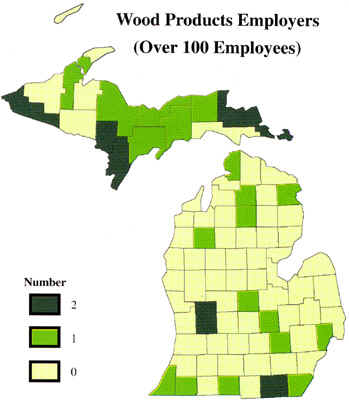
The three "placemat" maps (above) were produced by the Michigan
Geographic Alliance and the Science/Mathematics/Technology Center, Central Michigan
University, with funding from the U.S. Dept. of Education. For further information email Wayne.E.Kiefer@cmich.edu
Source: Unknown
Some of the text on this page has been paraphrased from bitannica.com, and the Public Museum of Grand Rapids and Grand Rapids Furniture : The story of America’s Furniture City by Christian G. Carron, 1998.
This material has been compiled for educational use only, and may not be reproduced without permission. One copy may be printed for personal use. Please contact Randall Schaetzl (soils@msu.edu) for more information or permissions.